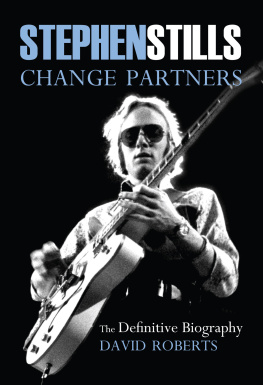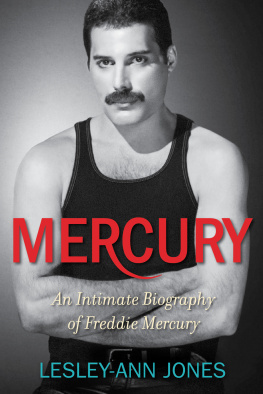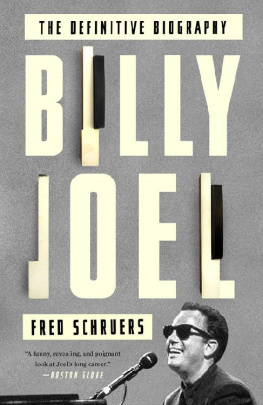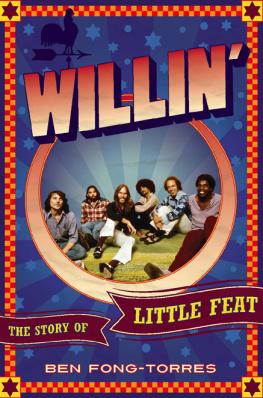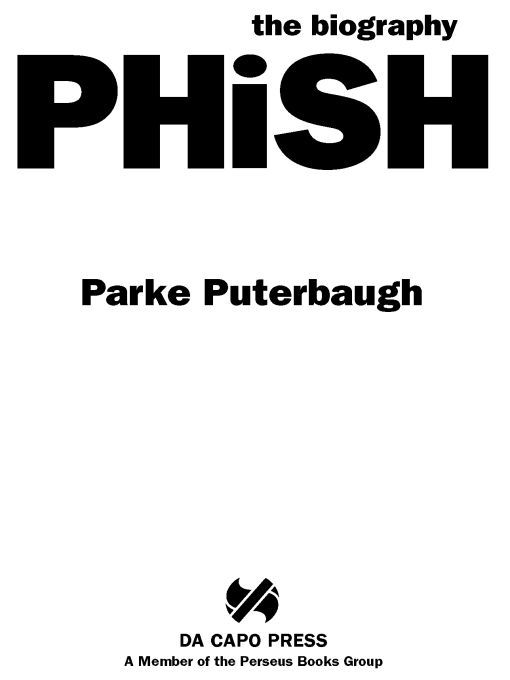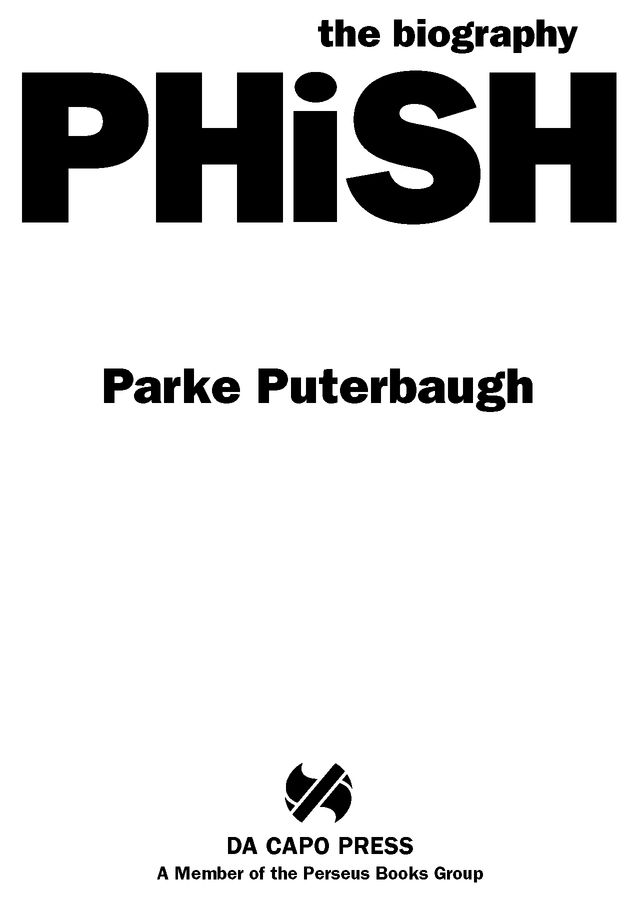Table of Contents
Also written or cowritten by Parke Puterbaugh
Moon California Beaches
Moon Florida Beaches
Rhinos Psychedelic Trip
I Want to Take You Higher: The Psychedelic Era, 1965-1969
The 100 Greatest Albums of the Eighties
Bruce Springsteen: The Rolling Stone Files
Southeastern Wetlands
To the troubadours from Gamehendge
ACKNOWLEDGMENTS
It took just over a year to do the actual writing, but in many ways this book has been almost fifteen years in the making. That is to say, I first met and interviewed Phish in 1995 and continued to do so with relative frequency to the present day. It all began with a story assignment for Rolling Stone and evolved into much more than I ever could have imagined. Phishs management thereafter recruited me to write for them on an as-needed basisalbum bios (group and solo projects), liner notes, Halloween playbills, Web site interviews, and more. I spoke at length with them numerous times over the years. Thus I accumulated an oral history of their career in real time from 1995 forward, filled with reflections and reminiscences about the preceding years as well.
Even with a case full of taped interviews, it didnt occur to me that I might wind up writing a book on Phish. Thats where Ben Schafer, executive editor of Da Capo Press, and Sarah Lazin, literary agent extraordinaire, entered the picture. A year after Phishs 2004 breakupor second hiatus, as it turned outBen began casting about for someone to write a biography of the band and contacted Sarah for suggestions. She knew of my work with Phish and suggested me. All the pieces seemed to fit: I had plenty of firsthand material and, if a book was going to be written, I wanted to be the one to do it. I firmly believe they are one of the great American bandsand not just jam bands. A number of things over the years have struck me as miraculous: word processing, the Internet, compact discs, Google, hybrid cars, the Hubble space telescope, the Mars Rover, the Big Sur coastline, a breaching blue whale, and Phish. So let me tip my hand: I believe that Phish is better on their worst night than most bands are on their best night. Despite some bumps and bruises, I see Phishs career as a four-way street of envelope-pushing, risk-taking creativity undertaken at the highest level of effort and commitment. And this story definitely has a happy ending, with their triumphant reunion in 2009.
The Phish organizationband, management, and past and present employeeshave been helpful and supportive of this project. Beyond extending their approval and cooperation, the group members allowed those whod worked for them to speak to me. No conditions were imposed or strings attached. My candid conversations with longtime employees and associates only reinforced my deep respect for the band and the culture of their organization.
Im especially indebted to Jason Colton, John Paluska, Tom Marshall, Beth Montuori Rowles, Amy Skelton, Kevin Shapiro, Chris Kuroda, Paul Languedoc, and Brad Sands. Jason has been my point man with Phish since 1995, and I got used to the calls from out of the blue: Do you have time to talk to the band about the new album (or whatever)? (Hell, yes, I have time!) As regards this book, Jason was extraordinarily helpful in all possible ways by opening doors, making contacts, offering insights, and much more. John generously made time for a lengthy interview, troubling himself to rise in the early-morning hours so that it could happen. Tom gave an illuminating interview atop the fabled Rhombusbrilliant suggestion, thatand subsequently answered piles of e-mailed questions in his witty, incisive way. Beth and Amy tendered lengthy interviews, sharing perspectives and recollections that brought the world of Phish on the road and in the office to life.
Anyone familiar with Phish understands how important Chris and Paul are to the bandthe fifth and sixth Phish(es), without question, for many years. I got to watch them work their visual and sonic magic from the board on a few occasions and also got to talk with them along the way, including a memorable interview with both men at Pauls rural Vermont homestead in 2008.
Kevin Shapiro was an extremely important source. He can answer virtually any question about the band and its history off the top of his head. He gave up considerable time to be interviewed, to help track down photographs, to point me to the worthiest shows, and to share his opinions, information, and insights (and not just about Phish) with me. Our first talk lasted six hours. That was the beginning of not only a series of interviews but also a genuine friendship.
Others in the Phish camp also gave generously of themselves and their time to talk to me. I had illuminating interviews with Megan Criss, Ian McLean, Tony Markellis, and Eric and Jill Larson. Ditto Jim Pollock, Dominic Placco, Todd Phillips, and Sue Drew. Also within the bands sphere are Dave Werlin (of Great Northeast Productions) and Ellis Godard (of The Phish Companion: A Guide to the Band and Their Music), who shared their informed perspectives on Phish and their particular corner of that universe. Though I regrettably didnt get to speak with her specifically for this book, I have had pleasant encounters with Julia Mordaunt in years past.
In addition, I struck up a lively e-mail correspondence with Jesse Jarnow, jam-band expert and fellow scribe, about Phish and related bands. A word of thanks is due to Beth Jacobson, Phishs former publicist at Elektra Records, for all her help in the mid-1990s, and to Kaytea McIntosh for polling a pile of her Phishhead friends for thoughts on the band. Rebecca Adams and Matt Russ shared their erudition on the connections (and differences) between Phish and the Grateful Dead.
About the time I started writing about Phish, I also got to know Treys sister, Kristine Anastasio Manning, because we were both, coincidentally, working on graduate degrees in environmental science at adjacent institutions: she at Duke University, me at the University of North Carolina. In a sense, she was Phishs first manager, arranging their earliests shows in New York City and starting up their newsletter. In addition to having interesting talks about environmentalism, I learned much about Phishs early days from her. Sadly, she passed away from cancer in April 2009.
Having mentioned The Phish Companion, I should offer a word on sources. Any outside sources Ive used are credited in the text. All un-credited quotes are drawn from interviews Ive conducted. Because Ive spoken extensively to the band members and those around themI transcribed nearly a half million words of taped interviewsI didnt need to go far afield from firsthand sources in researching this book. The notable exceptions are The Phish Companion, which is the Encyclopedia Britannica of all things Phish, and Richard Gehrs The Phish Book, a band-authorized oral history published in 1997. In my opinion, every Phish fan must have a copy of the Companion close at hand. Ive thumbed through mine so much that its literally taped together. The Phish Book is an endlessly illuminating overview of the first half of their career. Moreover, Richard generously shared with me his raw transcripts from that project, which included much unpublished material.



